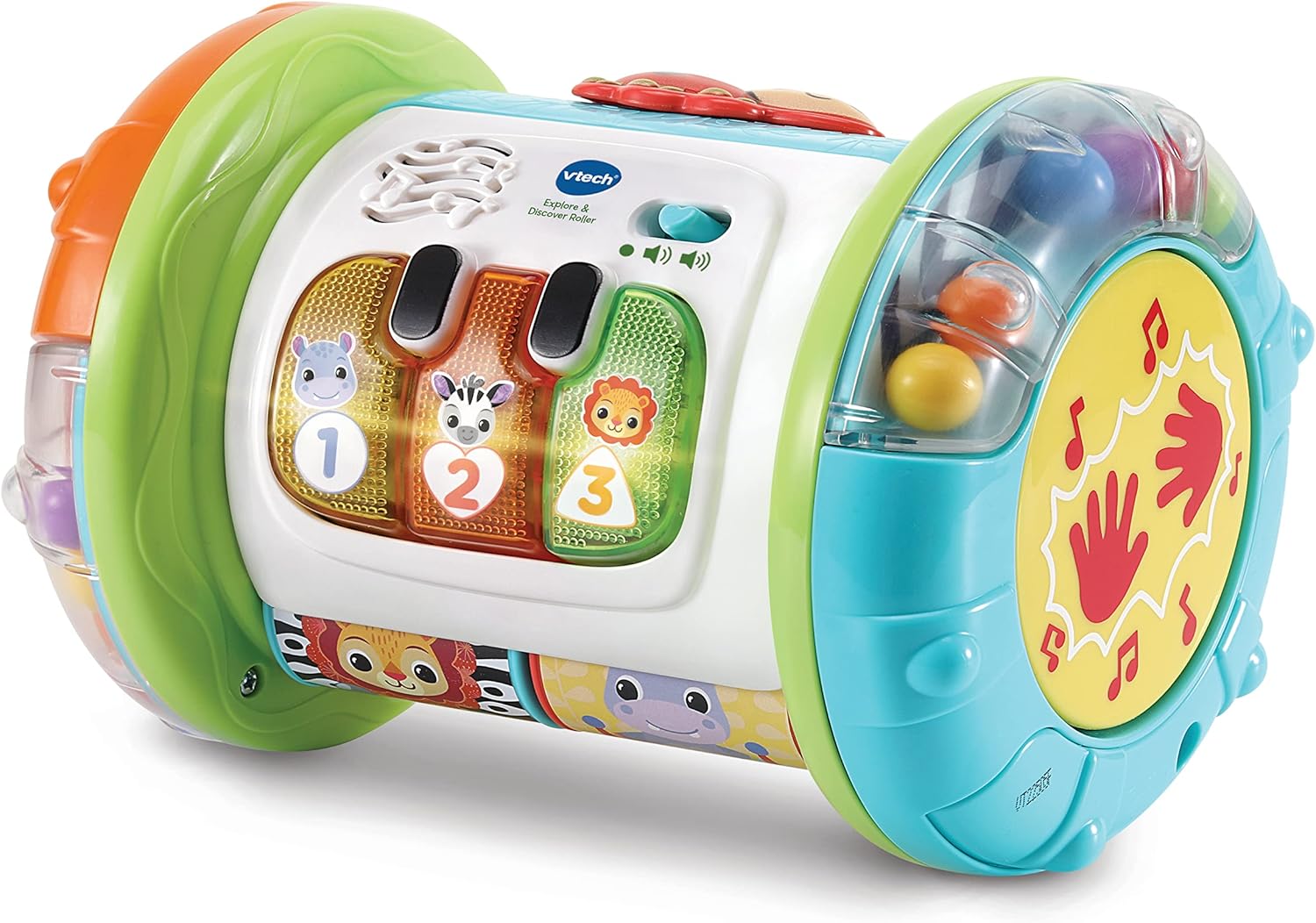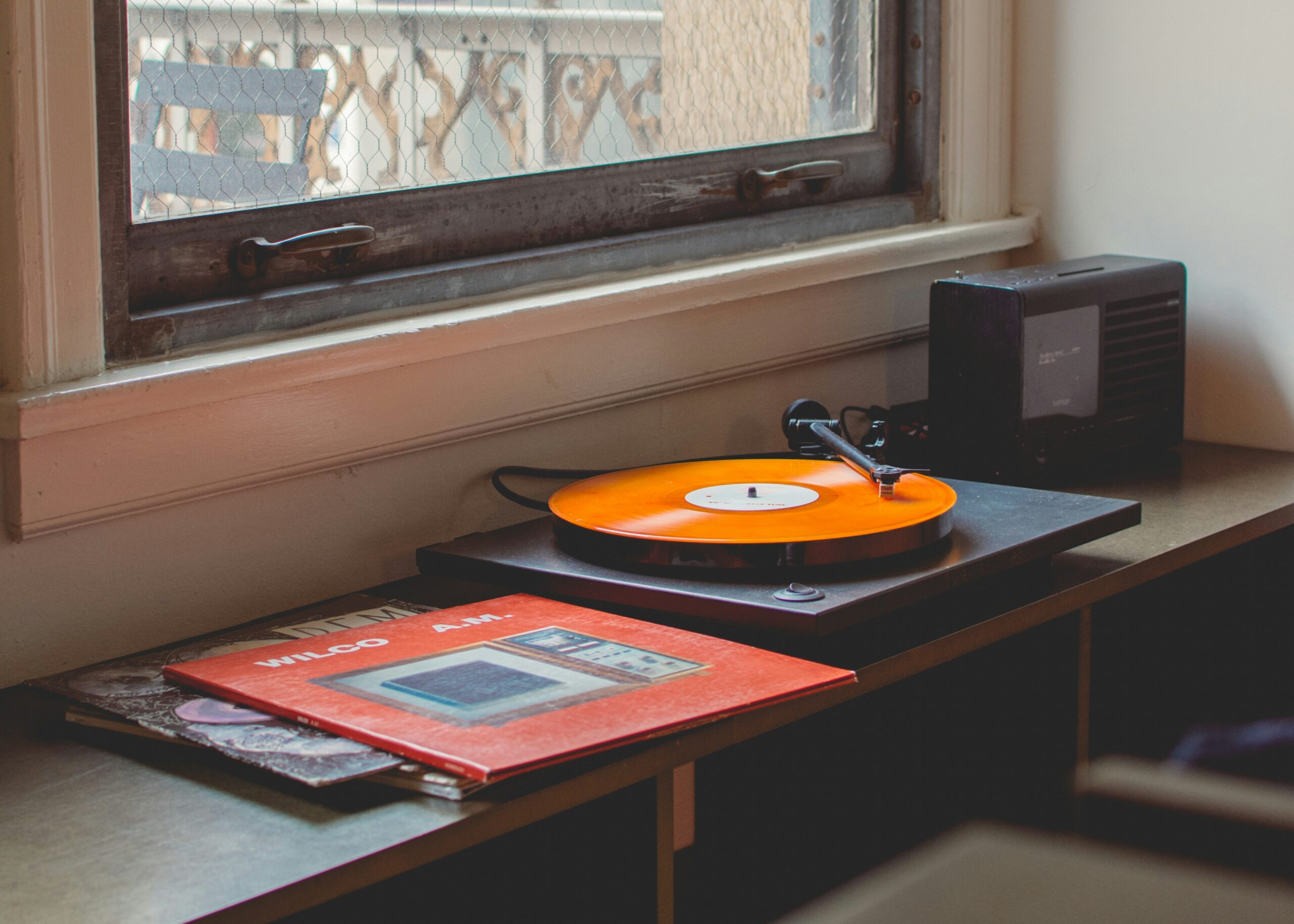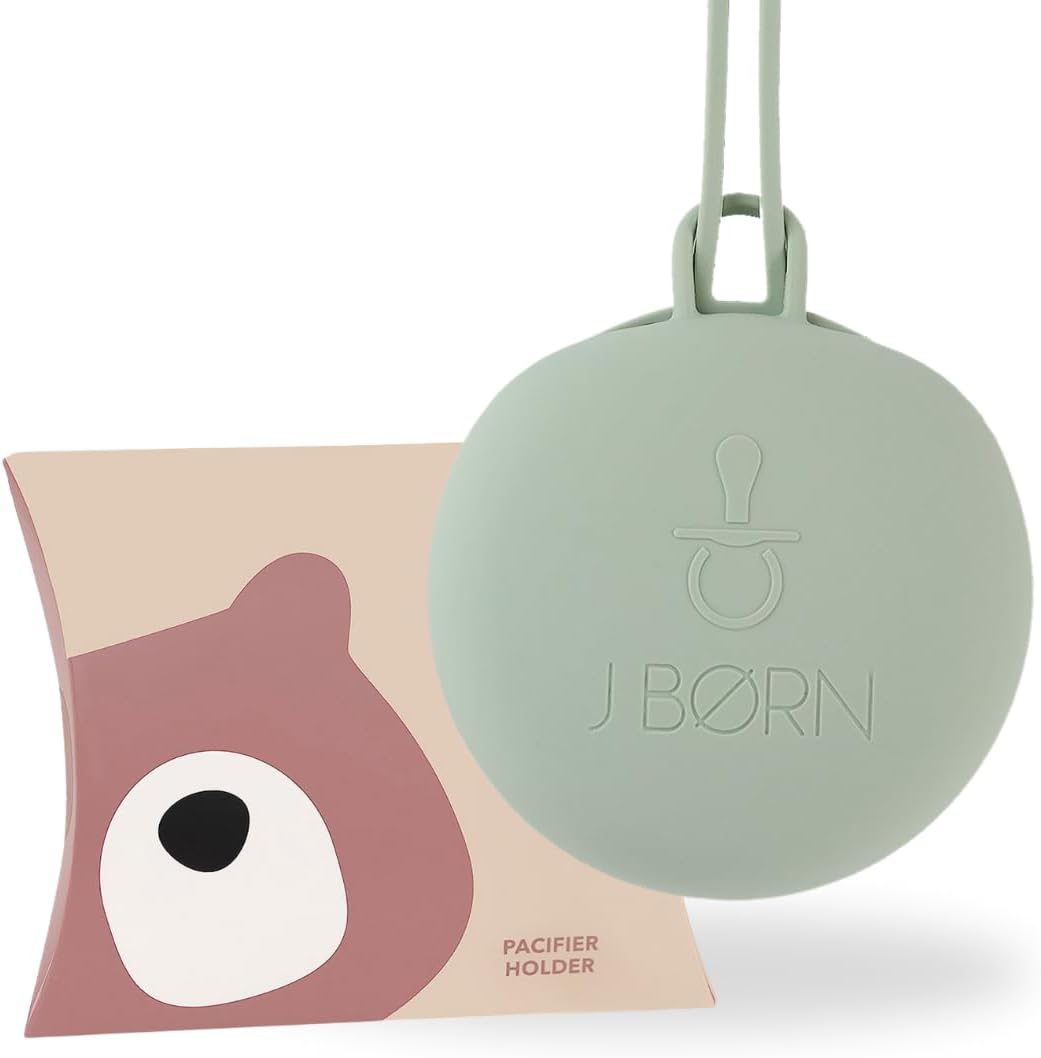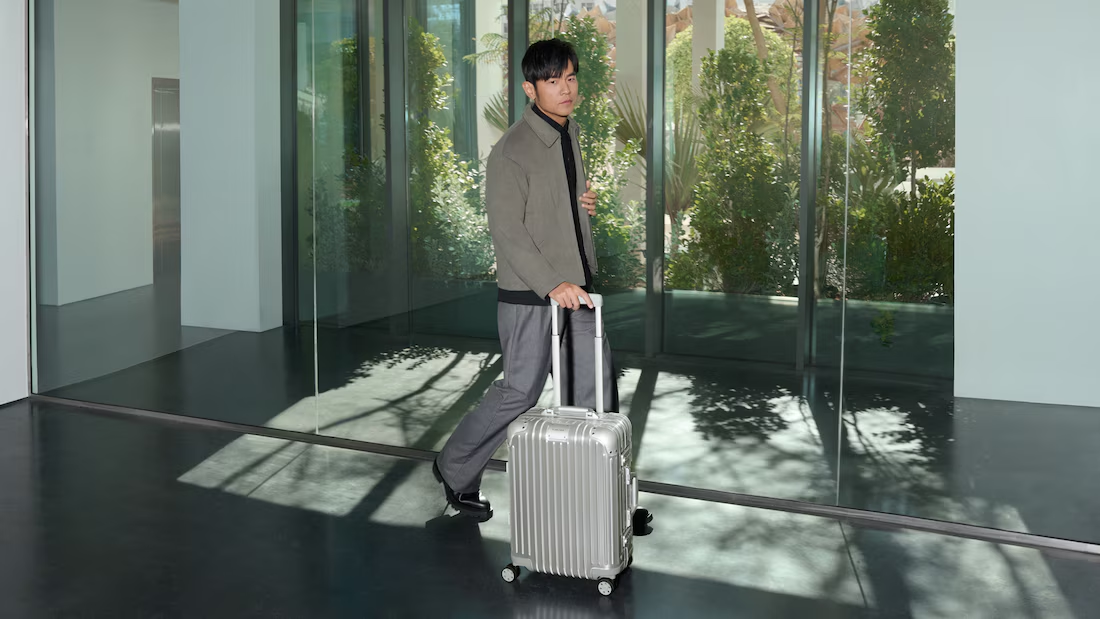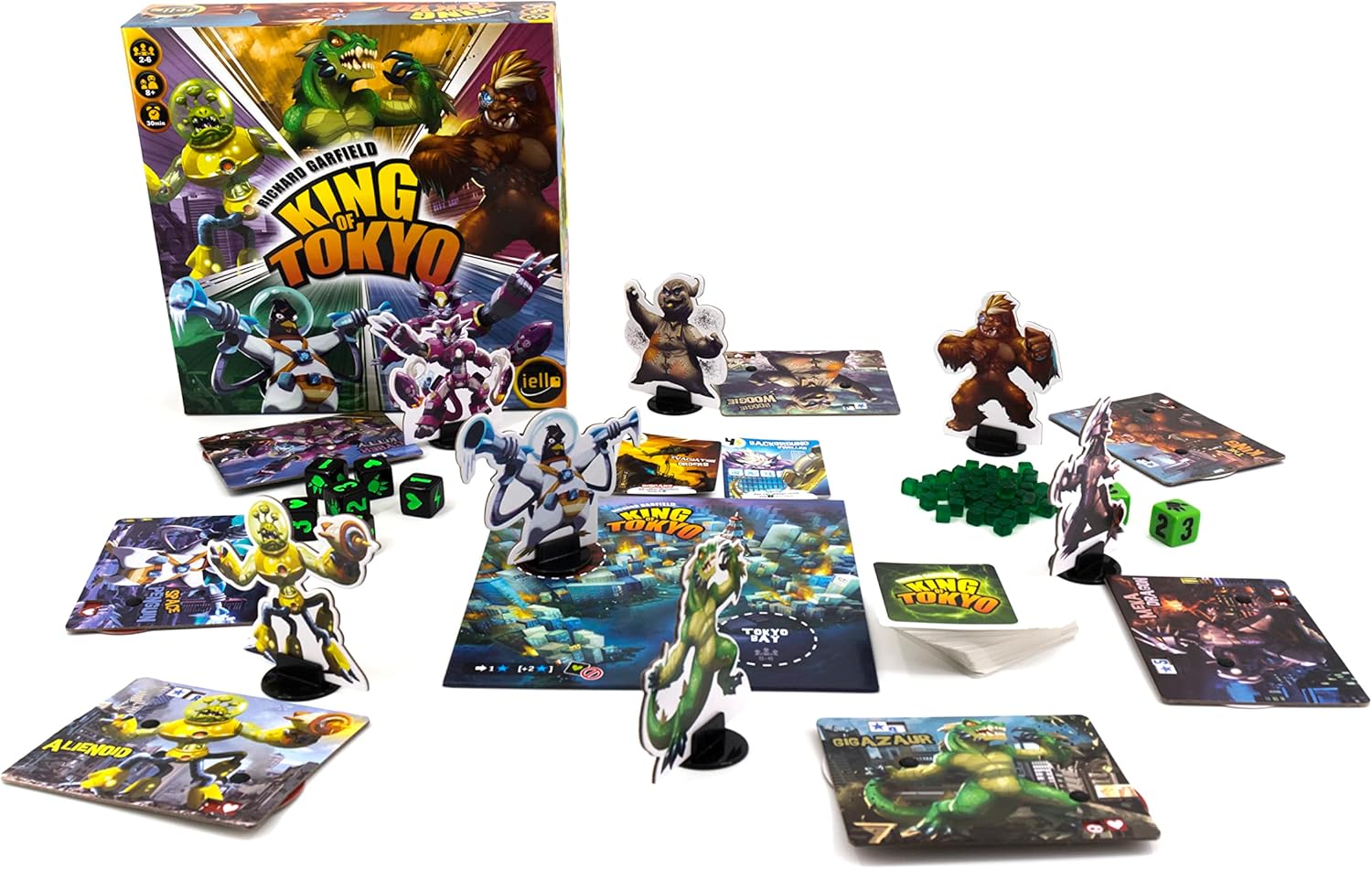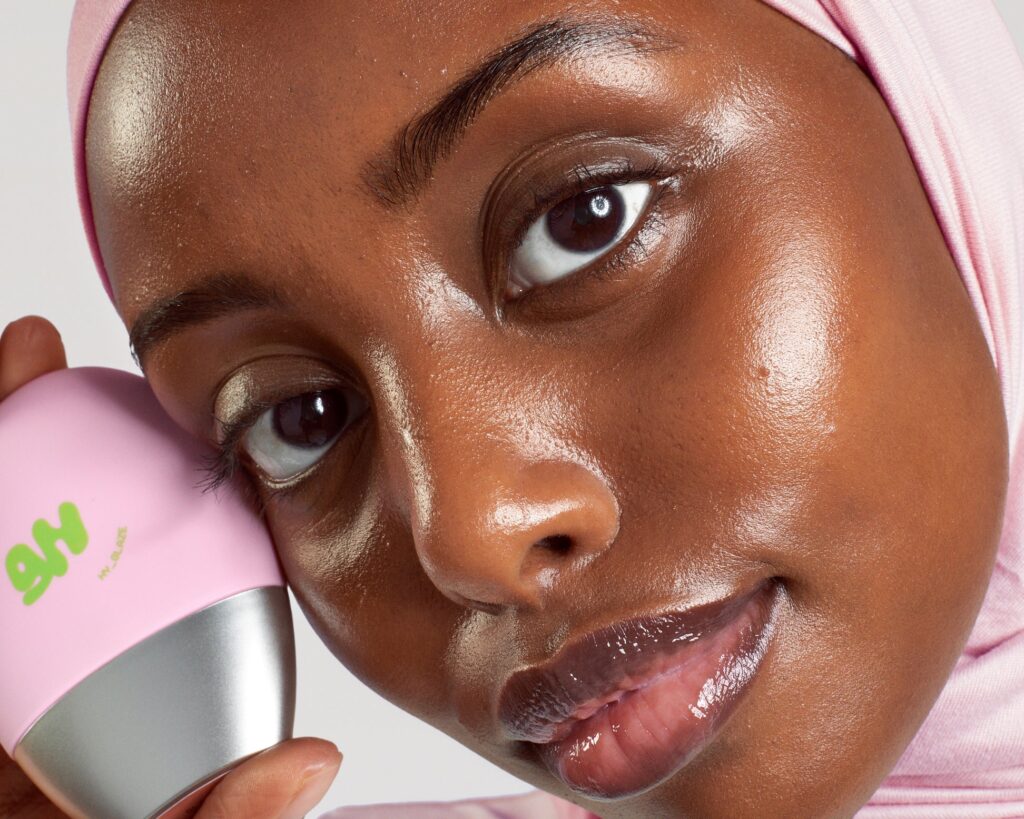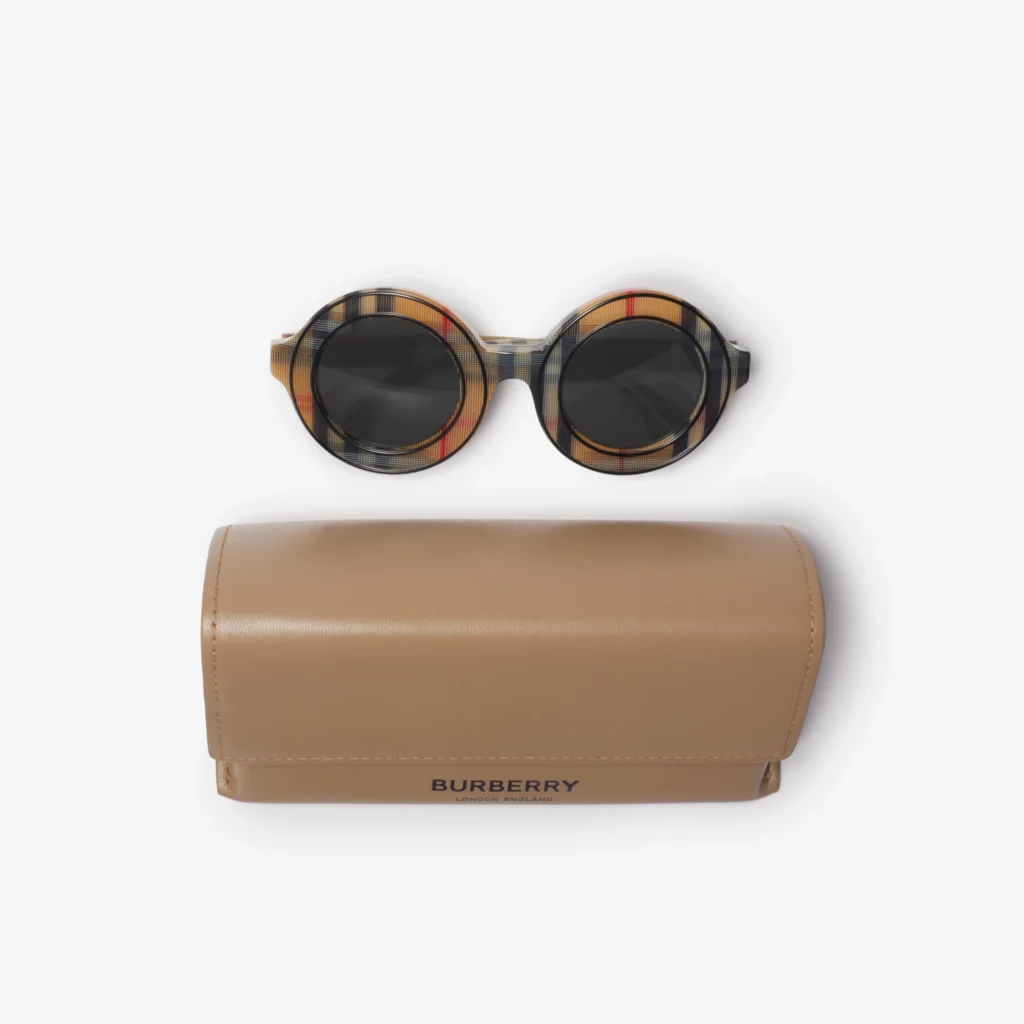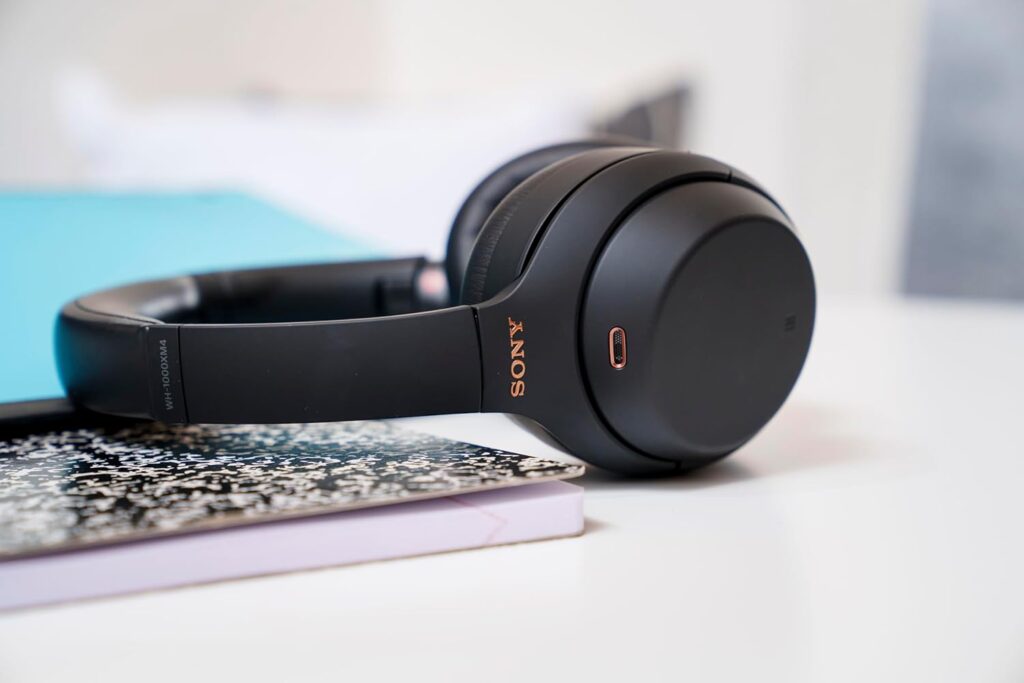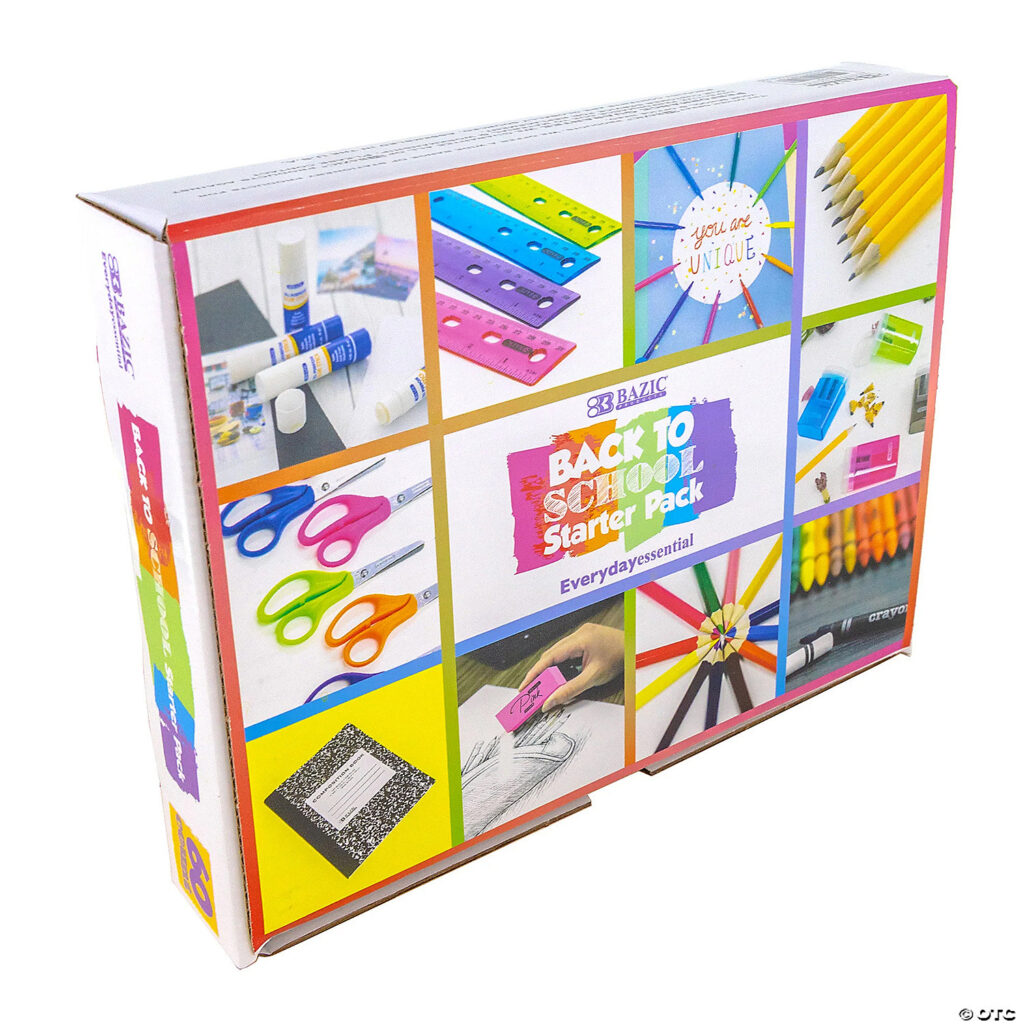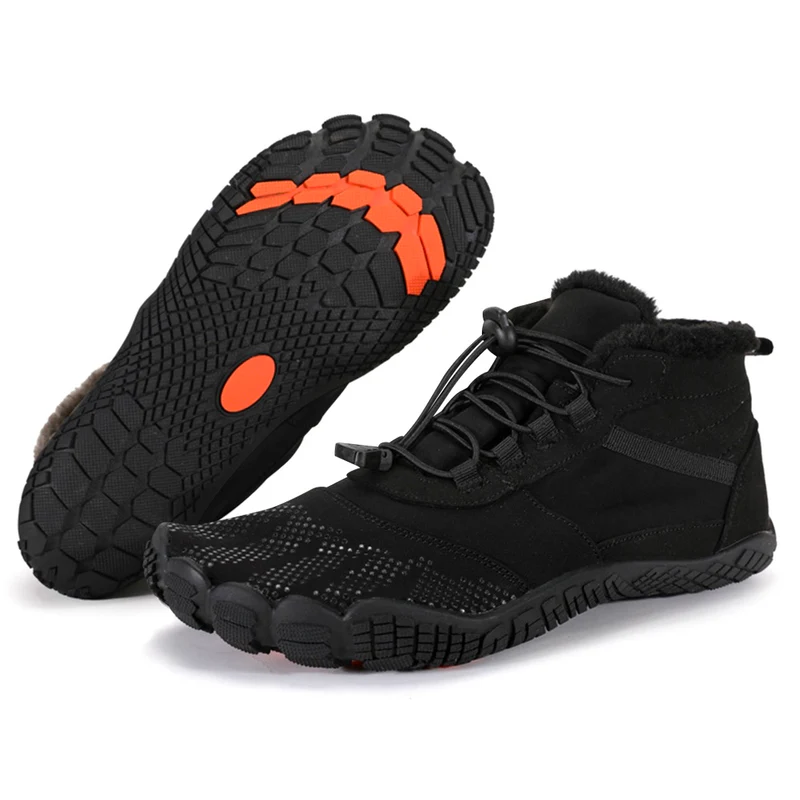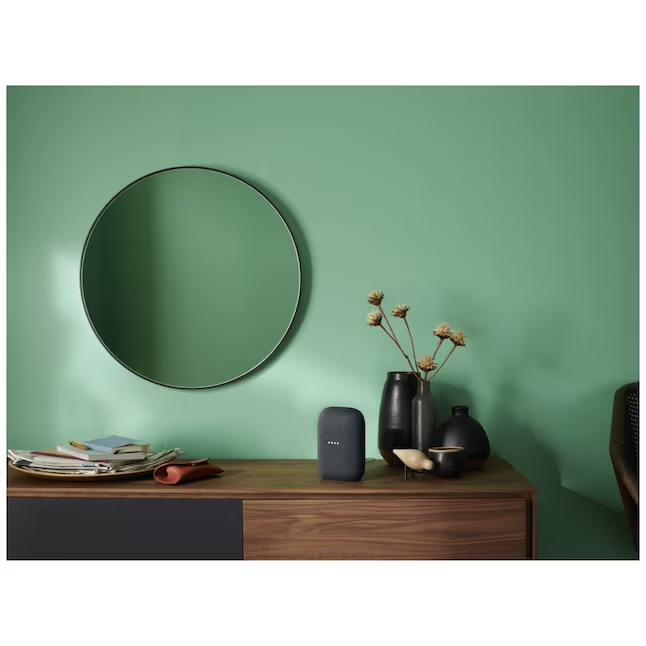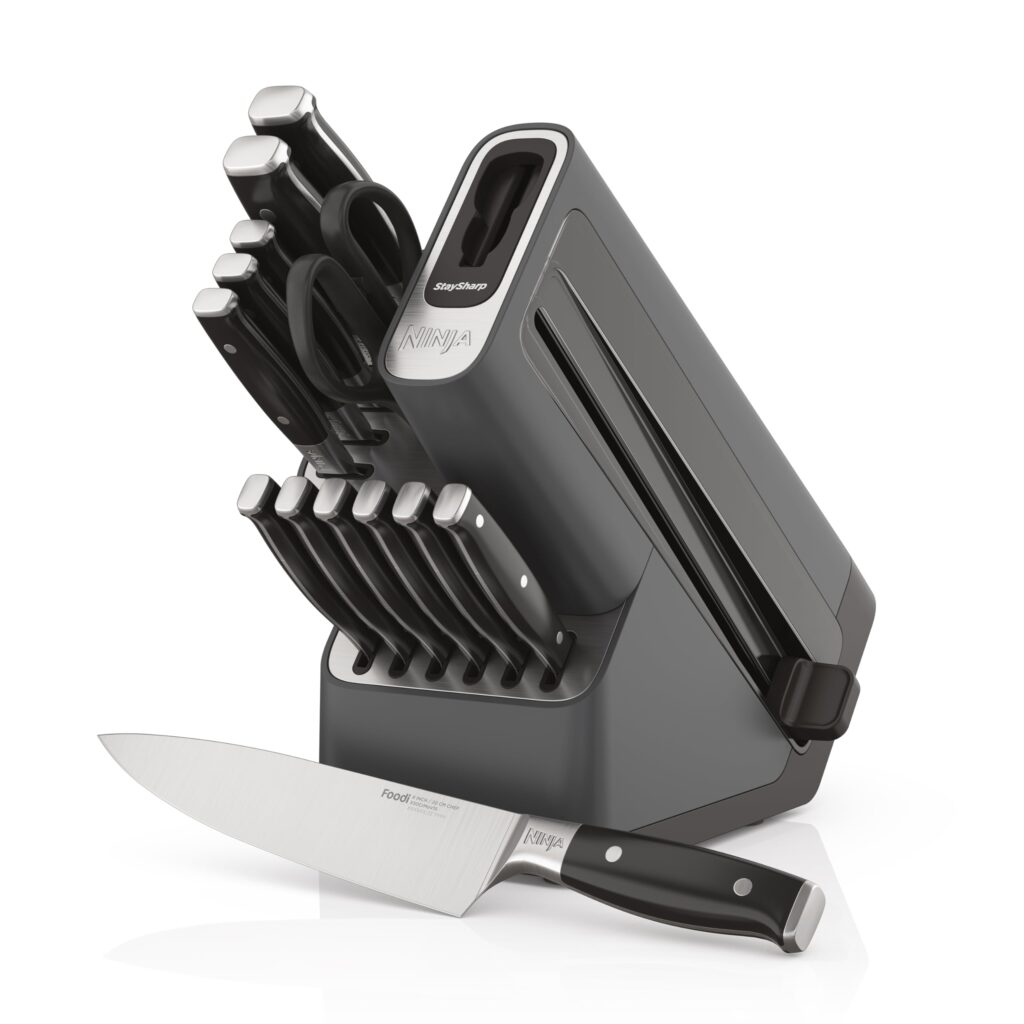Before babies use words, they use movement. Rolling, reaching, pushing, pivoting—these are the first “sentences” of childhood. The right floor toy converts this energy into brain fuel by pairing motion with sound, light, and texture. That’s the magic of the VTech Explore & Discover Roller: it entices babies to reach, swat, crawl, and eventually cruise—while feeding back songs, animal sounds, colours, and shapes. In this guide, you’ll learn how to turn a simple cylinder into a home mini-gym and language lab: smart room setups, age-by-age play prompts, a five-minute daily routine, and troubleshooting that keeps sessions happy. We’ll keep it real (spit-up, naps, “nope” moods happen) and practical (zero-prep ideas you can do between emails).
Shop VTech Explore & Discover Roller
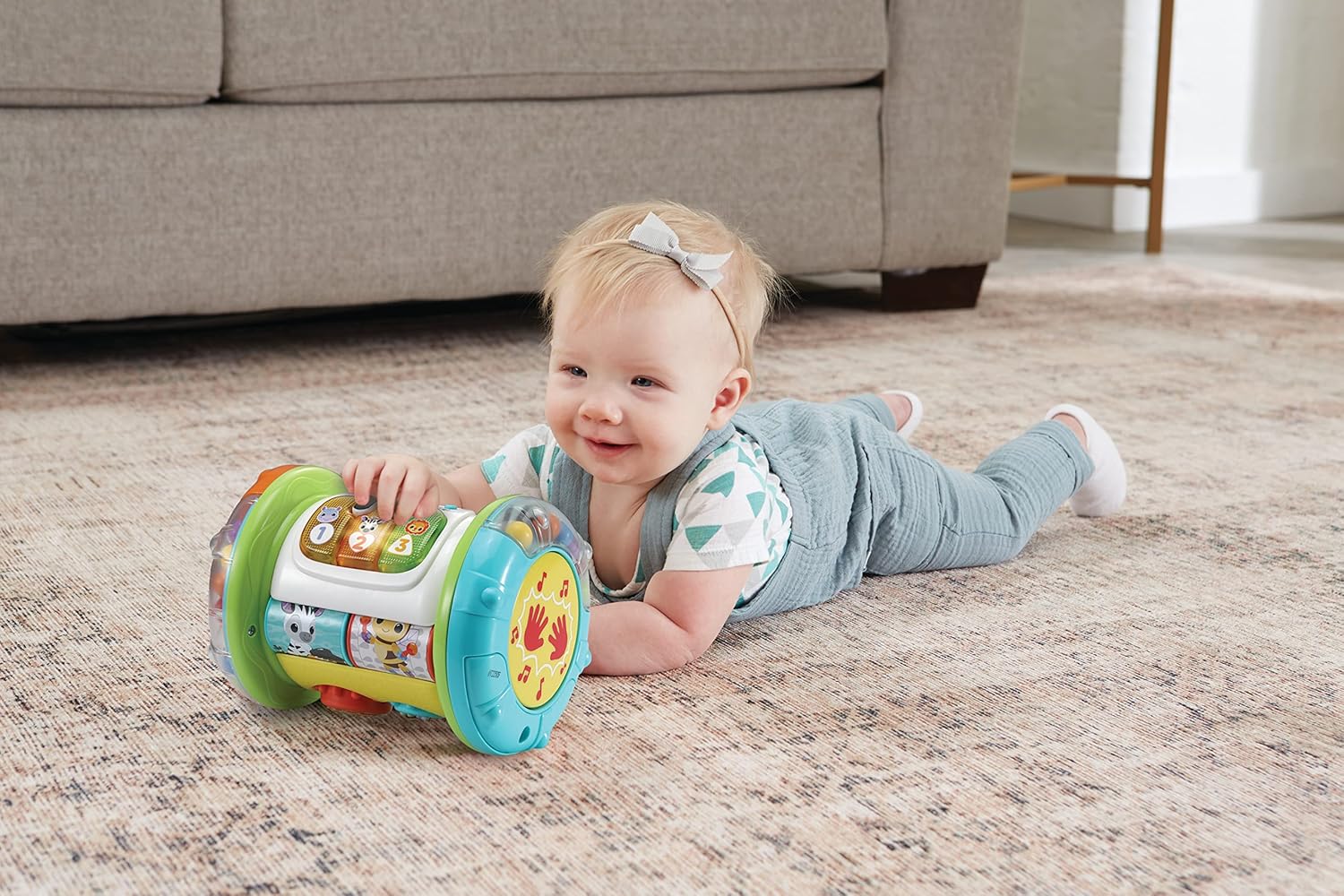
Why Rolling Toys Hit a Developmental Sweet Spot
A rolling target is the perfect challenge: always just out of reach. Babies adjust posture, shift weight, and coordinate arms and legs to catch it. That’s gross-motor gold (core, shoulders, hips) and executive-function practice (plan → act → correct). The VTech Explore & Discover Roller adds multi-sensory cues—buttons, lights, textures—so every touch triggers feedback. This cause-and-effect cycle (“I swat; it sings!”) motivates repetition, the engine of learning. Meanwhile, you narrate their efforts, translating movement into language: “Push… roll… stop!”
Skill Map: What’s Growing Under the Giggles
- Gross Motor: Tummy-time lifts, side reaching, cross-body crawling, early cruising while holding the roller.
- Fine Motor: Button pressing, fingertip exploration of ridges, gripping and releasing on command.
- Sensory Integration: Visual tracking of a moving object; auditory discrimination (songs vs. effects); tactile exploration (smooth, bumpy).
- Cognition: Cause-and-effect, object permanence (“It rolled behind the cushion—still exists!”), simple problem solving.
- Language: Everyday nouns (dog, cat), verbs (push, roll, stop), concepts (fast/slow, near/far), and joint attention (“Look!”).
- Self-Regulation: Short bursts of effort, brief pauses for songs, then effort again—a built-in rhythm that supports attention span.
When you pair the VTech Explore & Discover Roller with intentional prompts, you transform passive amusement into active learning.
Set the Stage: A Floor Setup That Works in Minutes
- Soft Zone: Lay a playmat or rug with good knee traction. Hard floors can frustrate early crawlers.
- Runway: Clear a 1.5–2 m lane for the roller to travel. Fewer obstacles = more satisfying successes.
- Catch Bumpers: Place cushions at each end to slow the roll gently.
- Parent Position: Sit at your baby’s eye level to model reaching and to narrate face-to-face.
- Parking Spot: Tape a small rectangle on the mat labelled “PARK.” Returning the roller here becomes a tidy-up ritual even babies can anticipate.
The VTech Explore & Discover Roller shines in open space; a small corridor of clear floor is enough to feel like a gym.
Shop VTech Explore & Discover Roller
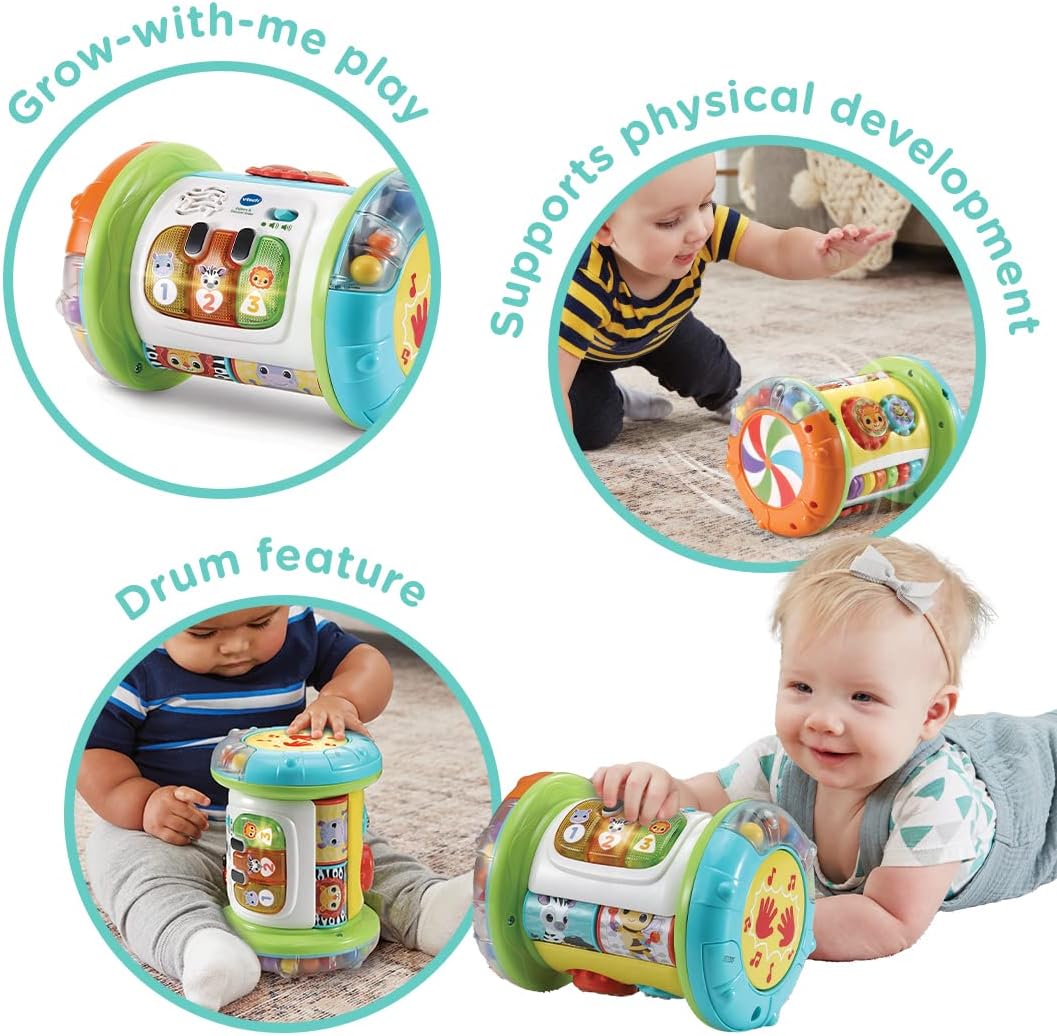
Age-by-Age Prompts (Zero Prep, Big Payoff)
3–6 months — Tummy-Time Wins
- Place the roller within forearm reach. Encourage a chin lift and hand swat.
- Narrate: “Touch… lights! You pushed it.”
- Micro-goal: Two swats, one smile. Stop while it’s still fun.
6–9 months — Side Reach & Pivot
- Put the roller slightly to one side. Let baby pivot from tummy to side to contact it.
- Add “Stop & See”: stabilize the roller with your hand so they can press buttons deliberately.
- Language: “Side, reach, press… song!”
9–12 months — Crawling & Mini Chases
- Gently roll it a short distance. Wait for the first crawl move, then cheer and pause the toy so baby “catches” it.
- Introduce near/far concepts and speeds: “Slow roll… fast roll!”
- Start “PARK” routine—after two chases, you and baby return the roller to the rectangle together.
12–18 months — Cruise & Carry
- Encourage pushing while cruising along a sofa.
- Play fetch-and-park: roll → crawl/walk to get → carry back to PARK.
- Language: add action pairs (“push–stop,” “get–bring,” “roll–catch”).
18–24 months — Little Coach Mode
- Simple commands: “Roll to Mum!” “Roll to the cushion!”
- Add two-step sequences: “Press the button, then roll.”
- Early adjectives: “big roll, tiny roll,” “fast roll, slow roll.”
Shop VTech Explore & Discover Roller
Language Boost: Talk With, Not At
Use three easy tools:
- Sportscast: Describe what they do—“You pushed… it rolled to the cushion!” (links action to outcome)
- Choices: Offer two options—“Fast or slow?” “To Mum or to Teddy?” (builds agency)
- Expand: If baby vocalises “ba,” respond: “Ball roll! Big roll.” (models vocabulary without quizzing)
The VTech Explore & Discover Roller provides sound cues; your words anchor those cues to real meanings and social connection.
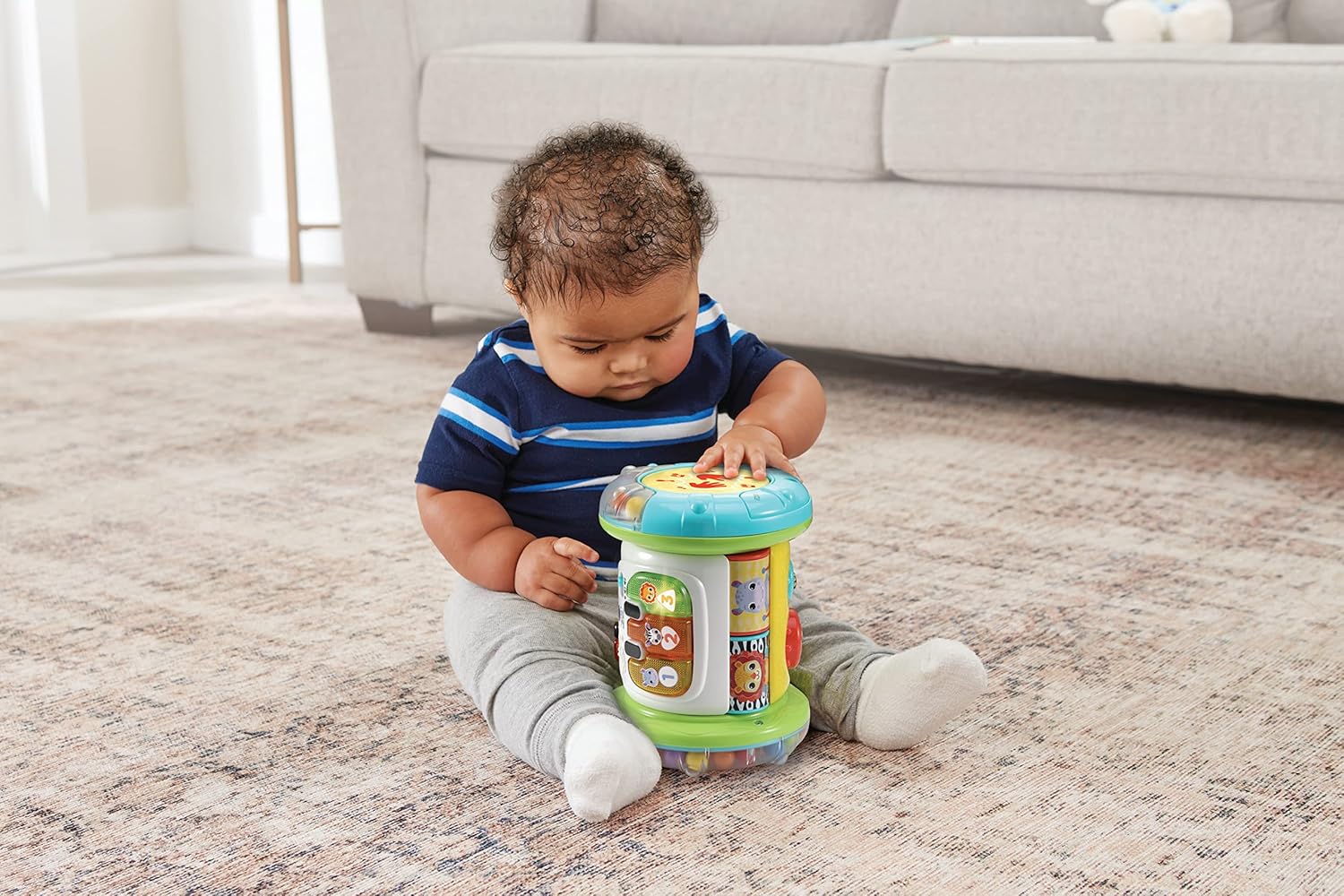
One Hybrid Block (Bullets + Guidance): The Five-Minute Daily Routine
- 1 min Warm-Up: Tummy or seated reach + one button press (prime the feedback loop).
- 2 min Chase: Two short rolls away → baby crawls/walks to catch → cheer.
- 1 min Skill Focus: Pick one micro-skill (press with index finger, slow roll, side reach).
- 1 min Cooldown: Roll to PARK together; wave “bye” to the lights.
Tiny, reliable reps out-perform occasional marathons. Five minutes today > twenty minutes once a week.
Sensory & Accessibility Notes
- Volume: Start low; many babies regulate better with quieter audio.
- Textures: Let touch-first kids explore ridges before turning sounds on.
- Visual Tracking: Roll in a slow, straight line at first; spirals come later.
- Alternate Positions: For babies who tire on tummy, try side-lying with a rolled towel behind the back to support trunk rotation.
- Simple Visual Schedule: For older toddlers who love routine, draw three boxes: “Press → Roll → Park.”
The VTech Explore & Discover Roller flexes for different sensory profiles—lean gentle or lively as needed.
Shop VTech Explore & Discover Roller
Motor Milestones: What “Progress” Looks Like
- Longer chin lifts during tummy time.
- Clean weight shifts from tummy to side to hands-and-knees.
- Smoother cross-crawl (opposite hand + knee).
- First controlled stops—hand on the roller to still it.
- Deliberate index-finger presses (fine motor precision).
- Early imitated words/sounds timed to the toy’s audio.
No two timelines are identical. Celebrate effort and strategy, not just outcomes.
Safety & Space: Keep the Focus On Fun
- Clear small objects from the roll path.
- Barefoot or grippy socks help traction.
- Stay within arm’s reach of early movers; rolling toys invite enthusiastic lunges.
- Battery check keeps feedback crisp; tired audio can frustrate.
The VTech Explore & Discover Roller is sturdy; your setup ensures safe exploration.
Parent Playbook: Mix in Science Without the Lab Coat
- Fast vs. Slow: Exaggerate roll speed; teach contrast words.
- Near vs. Far: Place the roller close, then a bit farther—name distances.
- Stop vs. Go: Make a “freeze!” game; model placing a flat palm to stop the roll.
- Up vs. Down: Prop one side of the mat for a tiny slope; watch how speed changes (older toddlers love this).
Science = noticing patterns. Your narration turns physics into vocabulary.
Group & Sibling Play: Share the Runway
- Two-Lane Track: Tape two parallel lines; take turns rolling in lanes to prevent collisions.
- Target Zones: Place soft toys as goals—“Roll to Bunny!”—and celebrate successful stops.
- Role Cards: “Roller,” “Catcher,” “Park Ranger.” Rotate jobs every 60–90 seconds with a timer chime.
The VTech Explore & Discover Roller keeps motivation high; clear roles keep the peace.
Shop VTech Explore & Discover Roller
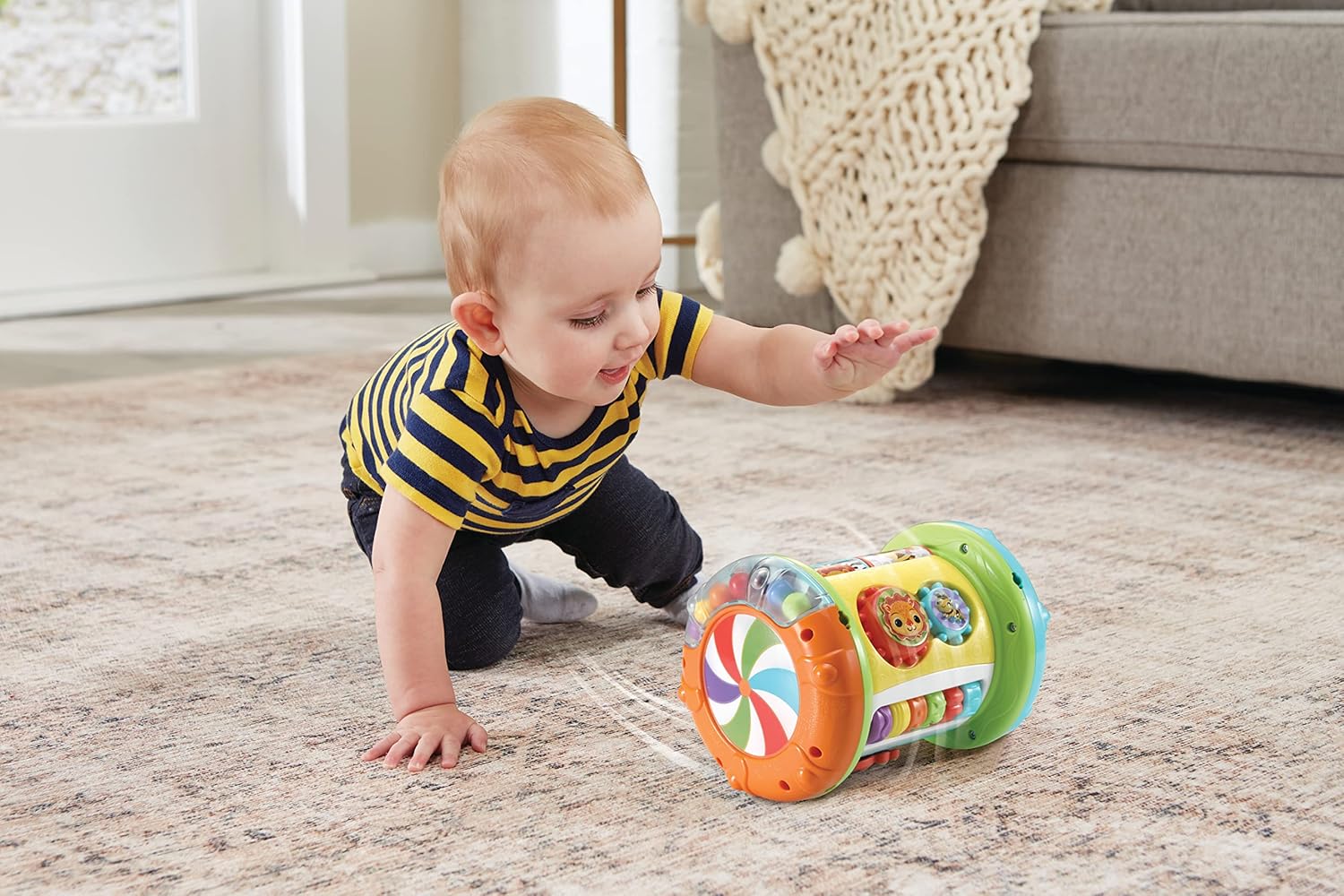
Extending Play: Beyond the Living Room
- Obstacle Safari: Cushion tunnels, chair “bridges,” a blanket “hill.” Roll, crawl, conquer.
- Colour Hunts: Match the roller’s light colour to a toy in the room (“Find something blue!”).
- Story Time: Read a short animal book; roll to the page creature (“Roll to the cat! ”).
- Music Mode: Play a slow song vs. a fast song; adjust roll speed to the beat—early rhythm + regulation practice.
Cleaning & Storage: Keep It Fresh
- Daily wipe-down of buttons/edges with a damp cloth; dry thoroughly.
- Crumb patrol after snack-time play.
- Parking habit at the taped box for visual order (toddlers love returning things “home”).
- Rotate toys weekly so the roller feels fresh and earns focused attention.
Shop VTech Explore & Discover Roller
Troubleshooting: Calm Fixes for Common Hiccups
- Baby ignores the toy. Roll it away slowly and pause; moving targets trigger pursuit. Sit at eye level and model a press + cheer.
- Overexcited + wobbly. Shorten the runway, lower volume, and switch to side-lying reaches to rebuild control.
- Only pressing buttons, no rolling. Use a “press-then-roll” routine with a gentle hand-over-hand roll, then let go.
- Frustration when it rolls out of reach. Add a cushion bumper so catches happen sooner; success first, challenge second.
- Slippy floor. Pop a non-slip rug under the runway; traction beats tears.
Conclusion
Early movement is early thinking. When you create a simple, safe runway and pair it with a responsive toy like the VTech Explore & Discover Roller, you give your child daily reps in strength, balance, attention, and first words—without scheduling a single “lesson.” Keep sessions short, narratives warm, and goals tiny (press, roll, park). Celebrate the chase and the catch equally. Over weeks, you’ll see stronger lifts, smoother crawls, deliberate button presses—and that gleeful look that says, “I did it!” That’s the good stuff: a body and brain learning together, one joyful roll at a time.
Shop VTech Explore & Discover Roller
FAQ
- What age is the roller best for?
Typically from around 3 months (tummy-time interest) through 18–24 months (crawling, cruising, simple games). Always supervise and follow your child’s pace. - Is the volume adjustable?
VTech toys commonly include volume options. Start low for calm focus; raise slightly in noisier spaces. - Will it help tummy time?
Yes. Placing the roller at forearm distance encourages chin lifts, weight shifts, and reaching—tummy time becomes a game, not a chore. - What if my baby just wants to press buttons?
Great start. Shape it into “press, then roll” sequences. Short chases build endurance and motivation for movement. - How long should sessions be?
Five minutes once or twice a day is perfect for babies. For toddlers, two or three short bursts beat one long session. - Is it safe on hard floors?
Use a playmat or rug for traction and softer landings. Add cushion bumpers at the ends of the runway. - Can siblings play together?
Yes—set lane lines, rotate roles (roller/catcher/park ranger), and use a 60–90 second timer to keep turns predictable. - How do I keep interest over time?
Rotate environments (hallway, lounge), change speeds (“fast/slow”), add targets (“roll to Bunny”), and integrate music or story prompts.

